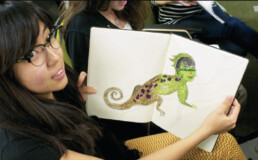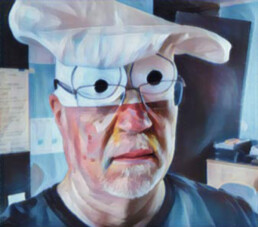Open play
is one key
to creative depth.

The Reach Global Design Research Network (of which my firm Fit Associates is a member) recently published its fourth in a series of books—Catalysts: thoughts on design research for meaningful change. The books collect essays and short snippets from projects, all written by members of the network. These snippets are my contributions to the PLAY theme, one of seven themes in the book.
A poetic lens on research and creativity
The fast pace of work and the pressure to perform too often drives teams to move quickly through the creative process. One unfortunate result of speed is shallowness. In research, we are tempted to spend less time with the people who will be affected by our work, treating them as resources from which we extract information rather than co-creators that hold deep wells of stories and meaning. In reflection we often default to simple analysis, looking for patterns in the cold data we’ve collected, but not truly holding conversation with the flows of life that surround our work. In making we feel pressure to deliver, and seldom take time to put our materials and resources in extended conversation with sensed possibility.
In our experience at Fit Associates, play is one antidote to these temptations. In particular, what we might call “poetic play.” It doesn’t have to take a long time to bring more depth to the work, and depth doesn’t have to feel solemn or serious. Play brings a deeper human connection to the challenge and the work, an opening for more purposeful and profound consideration during design, and more friendship and joy of work for all involved. We sometimes involve our team, clients, and the community of use in activities like:
- Making abstract models of the challenge or situation as though looking down from high above
- Sketching ripple effects—our work will affect these people doing these activities in these places, which will affect more people in more activities in more places, which will affect…
- Writing, drawing, or even role- playing based on poetic or mythic views of what’s going on and what’s possible: hero’s journey, inner lizards, angels and demons,…
- Inviting people to take walks in pairs or threes, preferably in nature, with two or three big questions to consider in conversation as they stroll; then gathering in a larger group to discuss themes that arose as they talked.


Recovering sandbox time
For us at Fit Associates, what started as an experiment has become an enduring weekly ritual. In conversation with other busy entrepreneurs, we lamented the loss of time for simple play. Our work is creative and satisfying, but always full of expectations. “How long has it been,” we wondered, “since we played like kids in a sandbox, where there is no expectation that we will produce anything or perform well; we just play?”The experiment was to set aside 90 minutes together on Zoom with our friends in Mexico and Colorado. It begins with the question, “What are you thinking of doing today?” and ends with a few minutes to share what happened. Sometimes we play together, sometimes on our own. Sometimes people have a desire: “I’m going to write,” “I’m going to paint.” But often we just don’t know! A breakthrough “method” is this: “I’m going to lie on my back, possibly nap, until I have an idea I’m excited about. Then I’ll get up and play with it.”
Now a year and a half later, we’ve had long-distance rapid-fire photo walks together, we’ve written poems and essays, painted, danced our questions and our moods, napped, shared three-minute sketch challenges, improvised, and thoroughly charmed and surprised ourselves with what can happen in ninety minutes of open play. Through it all we are recovering lost wisdom: open play is a key to creative depth.
